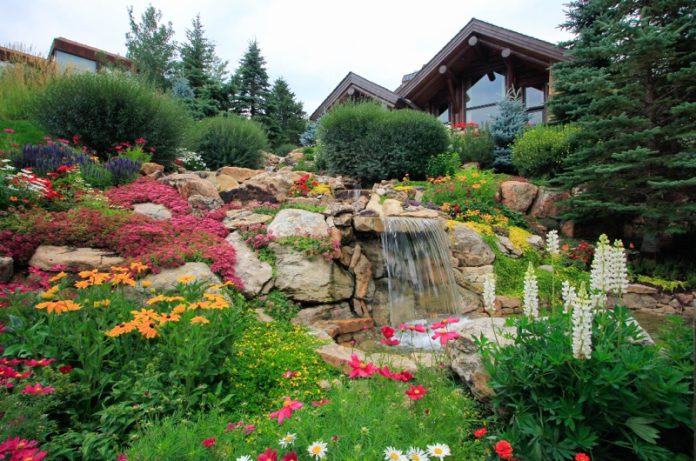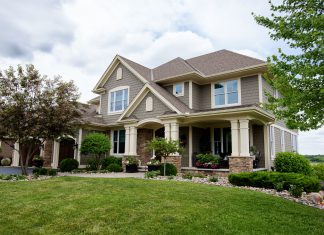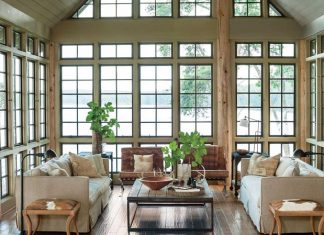Colorado is renowned for its diverse and breathtaking landscapes, ranging from majestic mountains to vast plains and stunning desert regions. Because of its diversity, as you survey the differing landscapes and terrains within the state, you will find diverging methods that differ depending on the region. However, when it comes to unique landscape designs by some of the best landscapers in Colorado, several distinctive features and elements stand out.
Here are a few examples of some of the most stimulating and gorgeous ideas to incorporate into your landscaping plans:
1. The Alpine Garden
Given Colorado’s abundant mountains and alpine environments, creating gardens that mimic the natural alpine landscape is a popular choice. These gardens often feature a variety of high-altitude plants, including wildflowers, grasses, and hardy shrubs. Incorporating rocks, boulders, and small streams adds to the authenticity and creates a serene alpine atmosphere.
2. Xeriscaping
Colorado’s semi-arid climate and limited water resources make xeriscaping a practical and eco-friendly landscaping choice. As a headwater state, Colorado’s waters flow out of the state, leaving it with limited resources to sustain itself. Xeriscaping focuses on using native plants that are adapted to the local climate and require minimal watering. This design typically incorporates gravel or mulch paths, rocks, and strategically placed drought-tolerant plants to create an aesthetically pleasing and low-maintenance landscape.
3. Rock Gardens
The diverse geology of Colorado lends to a colorful array of natural stone and rock options. Utilizing the natural beauty of rocks and boulders found abundantly in Colorado, rock gardens offer a unique landscape design option. These gardens often feature an arrangement of rocks in various sizes, creating terraces or elevated beds. Native plants and hardy succulents can be interspersed among the rocks, adding color and texture to the overall design.
4. Water-wise Landscapes
Given Colorado’s arid conditions, incorporating water-wise landscapes that conserve water is crucial. Designing landscapes with efficient irrigation systems, rainwater harvesting, and low-water-use plants is both environmentally conscious and visually appealing. Using decorative elements like dry riverbeds or ornamental fountains can provide the illusion of water without excessive water consumption.
5. High Desert Gardens
Creating gardens that embrace the desert aesthetic is popular in Colorado’s southwestern region, where high desert landscapes dominate. Using rustic elements like adobe walls, gravel pathways, and minimalistic accents can enhance the desert-inspired feel. These designs often incorporate cacti, succulents, native grasses, and low-growing shrubs that thrive in arid conditions.
6. Mountain Retreat Gardens
Colorado’s mountainous regions provide an ideal backdrop for creating tranquil and picturesque retreat gardens. These designs often incorporate natural elements such as meandering paths, cascading water features, and cozy seating areas nestled among trees and flowering plants. The use of native conifers, wildflowers, and shrubs that thrive at higher altitudes adds to the charm of these mountain retreat gardens, while the addition of water features adds a refreshing appeal to the design.
7. Terraced Gardens
Terraced gardens offer an innovative solution for maximizing space and creating visually appealing landscapes in areas with steep slopes or hilly terrain. You can build terraces using stone or timber retaining walls and plant an assortment of various flowering plants, shrubs, or even small trees. Each level can have a distinct theme or color scheme, creating a layered and dynamic garden design.
8. Japanese Zen Gardens
You can employ Japanese garden design principles in your Colorado landscape to create serene and meditative spaces. Zen gardens often feature carefully raked gravel or sand, rock formations, and minimalist plantings such as bonsai trees, bamboo, and moss. These gardens provide a peaceful retreat and evoke a sense of tranquility and balance in the landscape.
9. Wildlife-Friendly Landscapes
Colorado is home to a rich diversity of wildlife, and designing landscapes supporting local ecosystems can be rewarding and beneficial. Incorporating native plants that provide food and shelter for birds, butterflies, and other pollinators can attract and support local wildlife populations. Including features like bird feeders, butterfly gardens, and water sources can further enhance the wildlife-friendly aspect of the landscape.
10. Rooftop Gardens
In urban areas, rooftop gardens have gained popularity as a way to utilize vertical space and create green oases amid concrete jungles. These gardens can feature a variety of plants, including grasses, shrubs, and even small trees, depending on the load-bearing capacity of the rooftop. Rooftop gardens provide numerous benefits, including insulation, stormwater management, and improved air quality.
11. Wildflower Meadows
Embracing Colorado’s vibrant wildflower displays, creating a wildflower meadow is a beautiful and ecologically beneficial landscape design. Planting a mix of native wildflowers, such as lupines, Indian paintbrushes, and columbines, can create a colorful and dynamic landscape that attracts pollinators and provides a habitat for local wildlife. Incorporating pathways and seating areas within the meadow allows for immersive experiences among the blossoms.
12. Permaculture Gardens
Permaculture is a design philosophy that focuses on creating self-sustaining ecosystems where plants, animals, and humans coexist harmoniously. Designing a permaculture garden in Colorado involves careful selection of edible plants, companion planting, and integrating elements like rainwater harvesting systems, composting areas, and chicken coops. These gardens provide a sustainable source of food while promoting biodiversity and ecological resilience.
13. Rock Climbing Gardens
Taking advantage of Colorado’s renowned rock climbing culture, designing gardens that incorporate rock climbing walls and boulders can be a unique and adventurous approach. These gardens can feature climbing routes of varying difficulty levels, interspersed with hardy plants and seating areas for relaxation. The combination of physical activity and natural beauty makes these gardens an exciting and engaging outdoor space.
14. Artistic Landscapes
Colorado’s vibrant artistic community inspires unique landscape designs that merge art and nature. Artistic landscapes showcase creativity and individual expression, from sculptures and installations to murals and mosaic pathways. These designs can feature a mix of native plants, hardscaping elements, and artistic installations that create a visually striking and thought-provoking outdoor environment.
Remember, when designing a landscape, it’s important to consider the specific microclimates, soil conditions, and water availability in your particular area of Colorado. Local plant nurseries and landscaping professionals can provide valuable guidance and expertise to ensure your design is not only unique but also sustainable and well-suited to Colorado’s environment.
The Bottom Line
Take full advantage of your terrain to make the most out of your space. Even though these impressive trends can serve as excellent models to meet your needs, do not be afraid to experiment and inject your own personality and ideas into your designs. After all, popular models were once but a single thought that took wing and spread as others marveled at these wonders — you could start a whole new trend with your imaginative creation!














